Seamless spend control
Control global business spend, simplify important finance processes, and get real-time expense visibility with globally-accepted corporate cards and best-in-class ERP integrations.

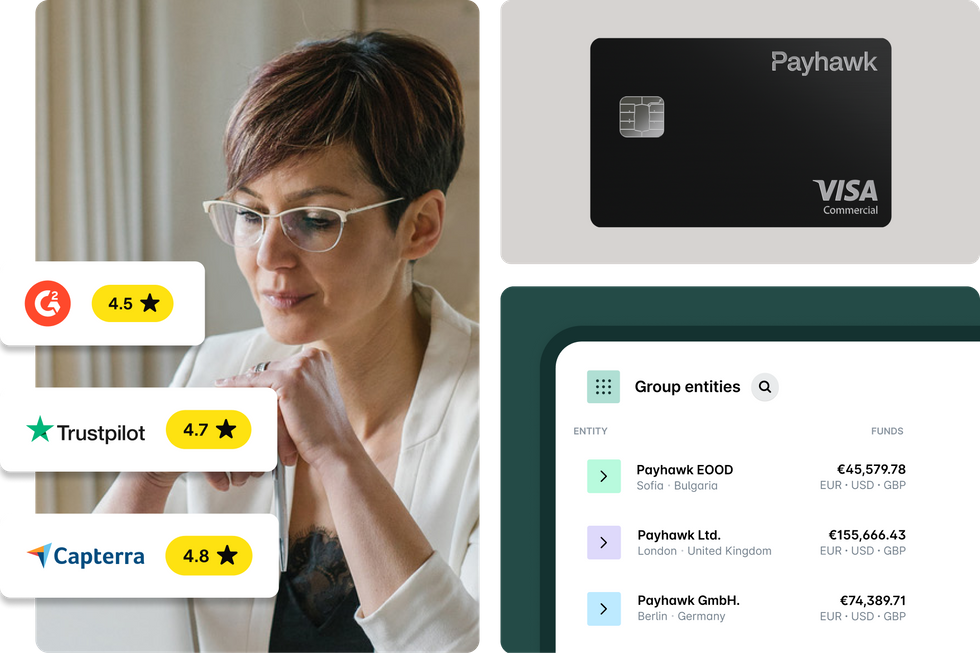


























“The transparency that Payhawk provides lets us get a much better overview of company spend. And having our corporate card transactions in one place (and only a click away) adds value to our finance processes, contributing to better cost control and optimisation.”
Save time with smarter spend management
Manage employee expenses, reimbursements, invoices, accounts payable, and company cards in a single platform.
Use globally accepted virtual or physical debit or credit cards, and add to Apple or Google Pay for even greater convenience.
Get automatic expense reconciliation and data transfer to your ERP or Accounting System (as soon as you’ve reviewed), no need to manually sync.
Send automatic prompts to employee phones to remind them to submit their data. And make data capture simple and error-free with leading-class OCR tech.
Monitor recurring payments, pinpoint duplicates, and avoid cost creep. Plus, pay invoices and get reminders to upload funds ahead of payment dates.
Export expenses, payments, and deposits in seconds and benefit from automatic two-way communication to your ERP or Accounting System.
Control, track, and manage spend — all in one place


Empower your teams with globally accepted credit and debit cards
Issue globally accepted corporate credit and debit cards individually or in bulk and get set to spend in just seconds thanks to virtual Payhawk cards with no bank issuance delays. Apple and Google Pay compatible, Payhawk corporate cards also come with low FX rates and important spend controls including monthly, daily, and single transaction limits.


Reconcile in real time for a faster month-end
Simplify your expense reconciliation process with OCR data capture, custom spend categorisation, and direct data transfer to your ERP or accounting system. Review your expenses and let the data flow, with no manual syncs and zero errors. Leading direct ERP and accounting system integrations leads to a faster, more accurate month-end for your teams.
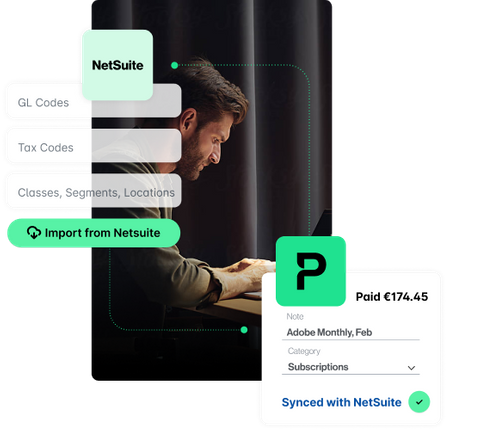

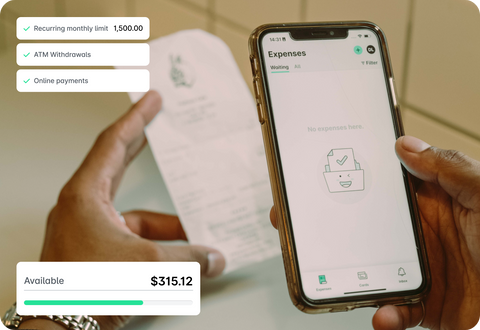

Stop chasing receipts
Save time chasing receipts with clever features like auto-blocking card spend due to late expenses and automatic receipt chasing. Plus, reduce data entry and manual verification for both employees and finance teams with leading-class OCR technology.


See our expense management software in action
Avoid subscription overspend
Load and pay invoices or issue credit notes via the platform alongside your other expenses and leverage smart subscription spend software to avoid duplication and cost creep. Let Payhawk’s AI pinpoint subscriptions, predict the billed amount, and remind you to upload funds before payments are due.
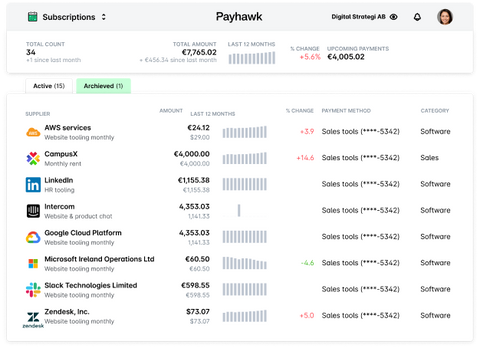



Allocate spend to team and project budgets
Allocate employee cards to team or project budgets and apply specific limits and workflows to these groups. Track spend easily and drive budget accountability across your fast moving business.


Seamlessly sync with your ERP
Take back your time and stop wasting hours identifying discrepancies thanks to direct integrations with your ERP and accounting systems. Seamlessly export expenses, payments, and deposits in seconds and benefit from automatic two-way communication to save more than two hours on manual processes a day.
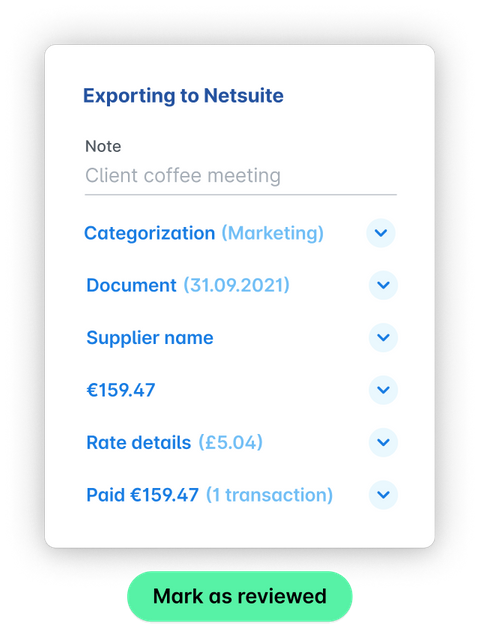



Never miss an important approval (even when OOO)
Custom build multi-step approval workflows based on payment size, org charts, holiday periods, and more, to alert managers of when they need to review and approve expenses. Create and customise workflows with ease and apply them to individuals, teams, and other groups as you need.




